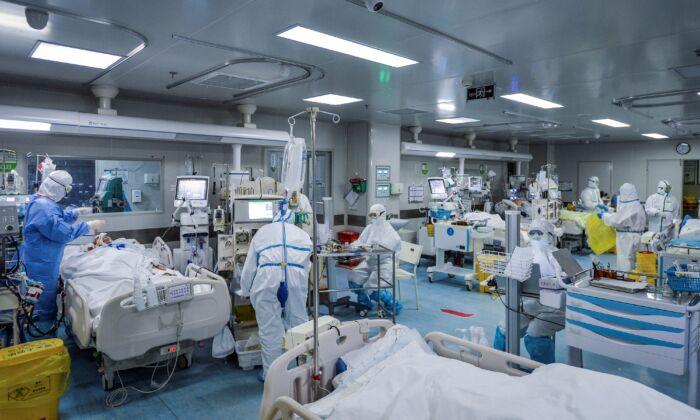BEIJING—Worrying cases of recovered coronavirus patients in China testing positive again for the infection have raised questions among doctors about the criteria being used for discharging people from hospital.
This has raised disturbing questions about the true state of people’s recovery and their potential to spread the virus without showing symptoms and has led to calls for more stringent scrutiny of people being discharged.
At the moment, patients in China are discharged after two negative nucleic acid tests, taken at least 24 hours apart, and indications of clinical recovery, including resolution of symptoms, according to the National Health Commission (NHC).
That is in line with World Health Organization recommendations published in January.
But Zhang Zhan, a doctor at Renmin Hospital of Wuhan University’s Department of Respiratory and Critical Care, said the requirement should be raised to three tests.
Zhang said she and some fellow doctors recently decided to delay the discharge of 18 patients even though they had met the two-test requirement. Thirteen of them came up positive for the coronavirus when tested again, she said.
“It’s more reliable to discharge patients after having three negative test results in a row,” Zhang said in a social media post.
Qi Xiaolong, professor of medicine and assistant dean of the First Hospital of Lanzhou University, told Reuters one more additional test might still not be enough.
Dormant or Discrepancy?
Experts say there are several ways discharged patients could fall ill with the virus again. Convalescing patients might not build up enough antibodies to develop immunity to the virus and are being infected again.The virus also could be “biphasic,” meaning it lies dormant before creating new symptoms. Some cases of “reinfection” have also been attributed to testing discrepancies.
Guo Yanhong, an official at the China’s NHC, said on Feb. 28 recovered coronavirus patients who later tested positive again have been found not to be infectious.
Nevertheless, he said there was a need to improve health tracking and management of recovered patients, and to deepen understanding of the virus.
There are no precise figures for the number of people discharged from hospital who later test positive.
A vice director of a disease control center in Guangdong Province told media last week that up to 14 percent of discharged patients in the province had tested positive again and had returned to hospital for observation.
China is not alone in cases of re-infection.
Last week, authorities in Japan said a tour-bus guide had tested positive for a second time.
Following the reports of re-infection, Taiwan became the first region outside mainland China to raise the bar on when to release patients. It now requires three negative tests, rather than two, the island’s health minister said.
In contrast, Singapore, one of the first countries outside China to have successfully controlled the spread of the virus within its borders, has not toughened its criteria for hospital discharge.
Whether or not a patient is discharged is a decision solely taken at the discretion of doctors on a hospital-by-hospital basis, the Singapore health ministry told Reuters.






Friends Read Free